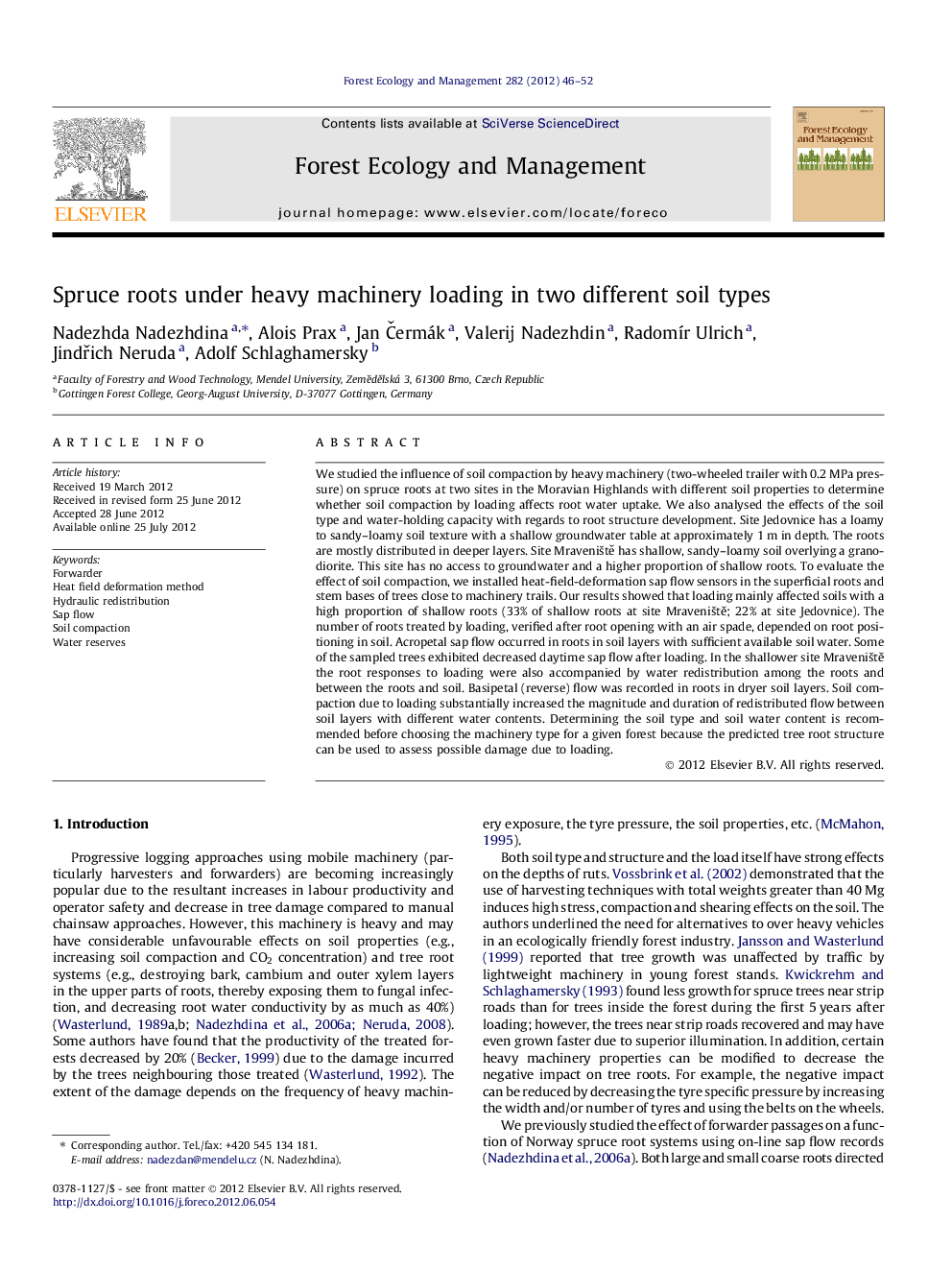| کد مقاله | کد نشریه | سال انتشار | مقاله انگلیسی | نسخه تمام متن |
|---|---|---|---|---|
| 87418 | 159250 | 2012 | 7 صفحه PDF | دانلود رایگان |

We studied the influence of soil compaction by heavy machinery (two-wheeled trailer with 0.2 MPa pressure) on spruce roots at two sites in the Moravian Highlands with different soil properties to determine whether soil compaction by loading affects root water uptake. We also analysed the effects of the soil type and water-holding capacity with regards to root structure development. Site Jedovnice has a loamy to sandy–loamy soil texture with a shallow groundwater table at approximately 1 m in depth. The roots are mostly distributed in deeper layers. Site Mraveniště has shallow, sandy–loamy soil overlying a granodiorite. This site has no access to groundwater and a higher proportion of shallow roots. To evaluate the effect of soil compaction, we installed heat-field-deformation sap flow sensors in the superficial roots and stem bases of trees close to machinery trails. Our results showed that loading mainly affected soils with a high proportion of shallow roots (33% of shallow roots at site Mraveniště; 22% at site Jedovnice). The number of roots treated by loading, verified after root opening with an air spade, depended on root positioning in soil. Acropetal sap flow occurred in roots in soil layers with sufficient available soil water. Some of the sampled trees exhibited decreased daytime sap flow after loading. In the shallower site Mraveniště the root responses to loading were also accompanied by water redistribution among the roots and between the roots and soil. Basipetal (reverse) flow was recorded in roots in dryer soil layers. Soil compaction due to loading substantially increased the magnitude and duration of redistributed flow between soil layers with different water contents. Determining the soil type and soil water content is recommended before choosing the machinery type for a given forest because the predicted tree root structure can be used to assess possible damage due to loading.
► Applied loading was not crucial for trees in term of water regime.
► Mechanical root damage was greater at the shallower site.
► Soil compaction due to loading increases hydraulic redistribution.
Journal: Forest Ecology and Management - Volume 282, 15 October 2012, Pages 46–52